Through the Looking Glass
A survey of art made for and about screens traces a supply chain of sorts, with works considering the material history of their production and the emotional aspects of their use.
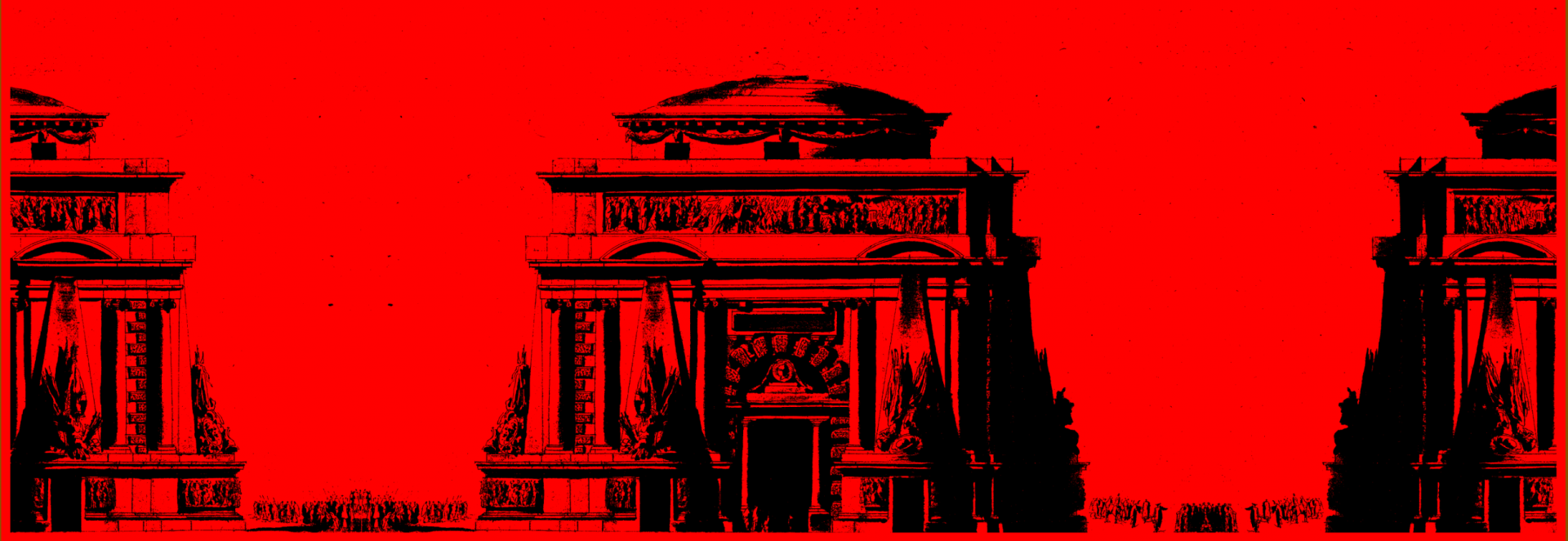
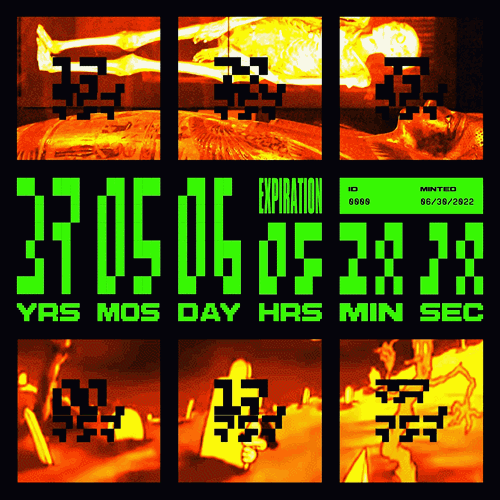
In January 2018, with the price of Bitcoin plummeting from what were then all-time highs, the very existence of a post on the r/CryptoCurrency subreddit advertising the National Suicide Prevention Lifeline made headlines in Newsweek and Yahoo News. This spring, as another bull market turned to bear, the hotline posts were back. On the subreddit for TerraUSD, the stablecoin that catastrophically imploded, a moderator listed suicide hotlines for dozens of countries, a bleak reminder of the newly expanded reach of web3 since the last time we went down.
But casual allusions to death are part of the everyday language of crypto traders. Downward price action is either “bleeding out” or “nuking” fast, with the occasional relief found in a “dead cat bounce.” Even in good times, though, winners manage their disbelief over what they’ve supposedly earned with a pessimism so fatalistic that it can feel like masochistic hope: the collapse is coming, they say, when all these scams built on Ponzis will unwind in a violent total market collapse. Everything will go to zero, and it’ll finally be over.
Somehow Kierkegaard foresaw the mental stress of trading crypto back in 1849: “When death is the greatest danger, one hopes for life,” he wrote, “but when one becomes acquainted with an even more dreadful danger, one hopes for death.” And yet, how often does one get what they want? What if, in the markets or elsewhere, the apocalypse never really comes? What if instead of collapsing together we all die alone, marginal characters in a story with no ending? Now, here’s an unusual form of NFT utility: making you think about that.
What if, in the markets or elsewhere, the apocalypse never really comes?
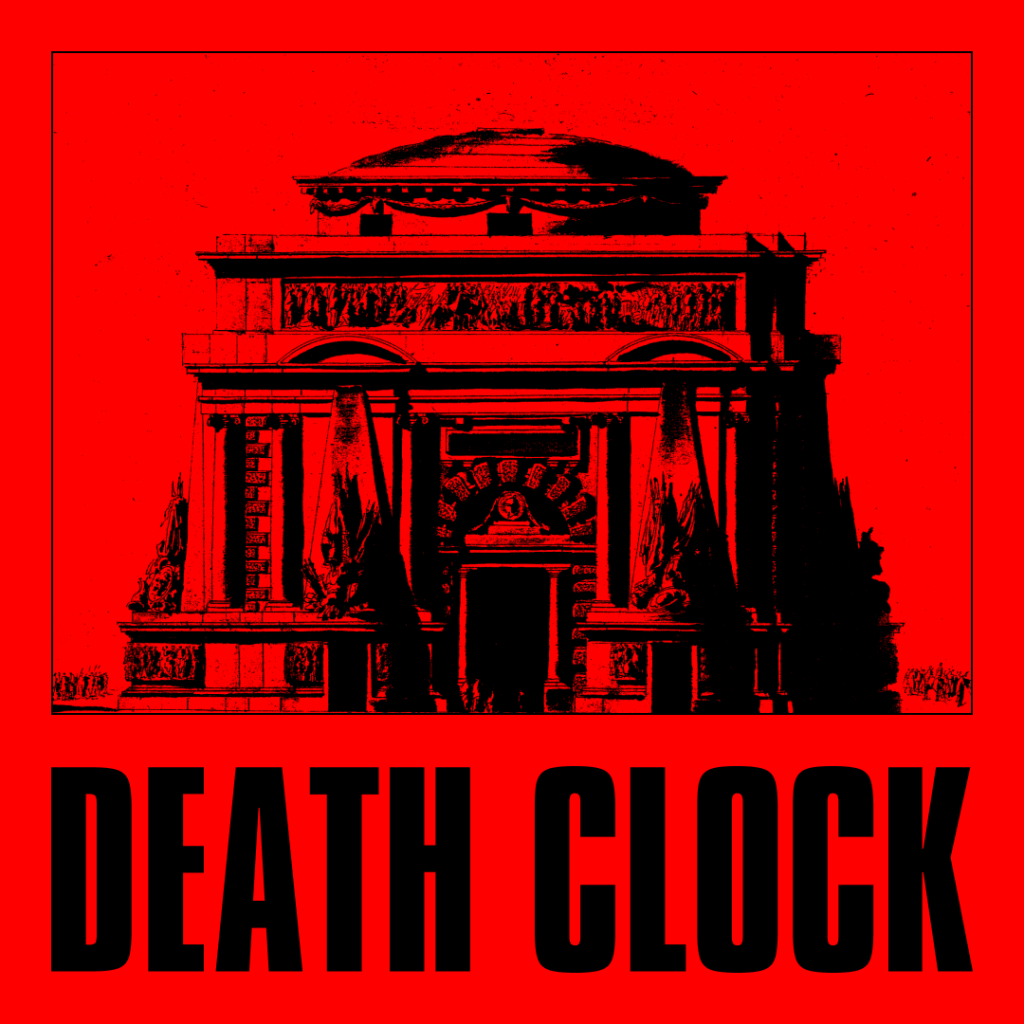
Death Clock is the inaugural NFT collection of the New York collective DIS, which has been circling the crypto art space since before NFTs existed. Take, for example, the 2015 Data Issue of DIS Magazine, which presaged PFP discourse in articles about self representation in network society, on the one hand, and cults at scale on the other. The issue’s contributor list is full of future NFT artists: Holly Herndon, Ed Fornieles, Rafaël Rozendaal, and Simon Denny, who would later present the exhibit “Blockchain Visionaries” at 2016’s DIS-curated Berlin Biennale. It was Rozendaal, more recently, who introduced DIS co-founders Lauren Boyle and Marco Roso to their Death Clock production partner Chain/Saw, best known for collaborating with Pepe the Frog creator Matt Furie.
There will be 500 initial Death Clocks, each its own IPFS-hosted web app so the code can live forever on-chain even if its holders won’t. (When I asked about the realistic prospects for the work’s super-long-term conservation, Roso replied, “It’s Javascript. It’s kind of like the painting of coding.”) Within the app, owners will first take a short survey that’s meant to be more playful than punitive, with questions about their screen time and flossing habits but not, for example, their BMI. Based on the responses, Death Clock will predict their time of death down to the second, store that date in its metadata, and render the animated art that, in many cases, will take decades to play out: a countdown to zero.
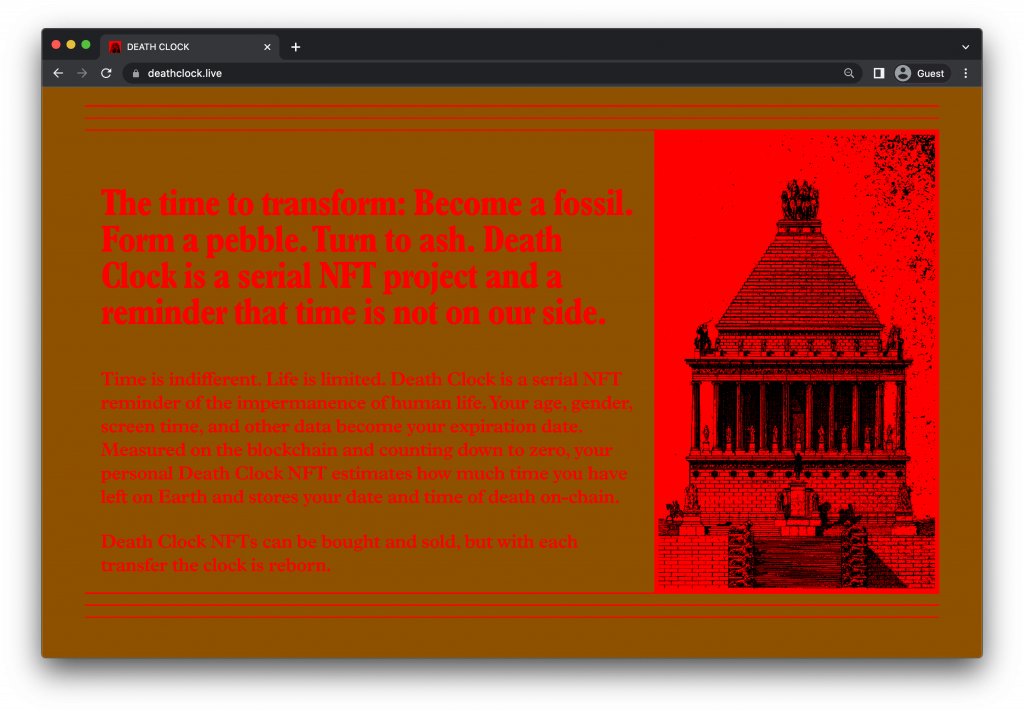
Surrounding the countdown clock will be a grid of found images: it might include a cell phone photo of a skeleton on an archaeological dig or a film still of Bambi’s mother dying. There’s no clear defining aesthetic to the hundred-odd source images, except perhaps the sort of screenshotted, could-be-anything quality of an early 21st century moodboard. But collectively, the images provoke a similar question as the project’s official Twitter account, which often posts historical death-related trivia: in conversations about death in modern life, where are we? Death today is ubiquitous, in a sense, but it’s seen more like a plot point or a cudgel or a subject of study than it is us. The point of the NFT, then, seems fairly obvious: to occasionally remind one of oneself.
Maybe the Death Clock sits in a holder’s wallet alongside hundreds of degen mints that flopped so badly that the NFTs can’t even be resold. Or maybe it’s part of a highly considered art collection that will someday be inherited by someone’s children, or gifted to an institution. In any case, one’s Death Clock might function like the painting that Pope Innocent IX commissioned of himself on his deathbed and kept in his bedroom, as E.M. Cioran describes in The Trouble With Being Born: as an object to glance at before making an important decision.
Lest the Death Clock seem to overstate its holder’s place in the cosmos, though, its visual design also features a secondary clock that endlessly counts and recounts the 8 minutes and 20 seconds it takes light from the sun to reach Earth. While the personal countdown has a pixelated style reminiscent of early computer displays, evoking an era of brimming scientific confidence, the light-speed clock is more abstract, almost resembling ancient hieroglyphics. We may be our own protagonist, but when our life is viewed from another scale, we barely exist.
As DIS’s Boyle put it, describing the overall project, “Time is not on our side.” Death Clock makes this fact inescapable. After the NFT is transferred, as in a secondary sale, the clock resets and prompts the new owner with a new survey. But in the original wallet, after the transfer, a new commemorative NFT spawns with the original death date, and this NFT cannot be moved. Death, it seems, is soulbound.
Death Clock was announced in late March 2022, and in the three months since, crypto really did just nuke and bleed, with the price of ETH down some 65%. One victim—albeit temporarily, before the project is deployed on-chain to begin its long march toward forever—is the Death Clock itself, as the release date has remained unannounced in part due to uncertain market conditions. Though DIS intends for Death Clock to have an accessible mint price—“It’s just a way to start a conversation with people,” Boyle said—it seems wise to begin that conversation when more people want to listen.
We may be our own protagonist, but when our life is viewed from another scale, we barely exist.
Last year, during the era of earnest if deluded proclamations that “we’re all going to make it,” the NFT space was dominated by bright and cheery cartoons. Lately, though, the projects that claim the diminished mindshare have been markedly darker. Goblintown.wtf looked hideous on purpose; the holders of We Are All Going to Die, during one Twitter Space, burned their NFTs to the sound of agonized screaming. Milady Maker saw a bump in its floor price after a raver at one of their parties briefly died in real life, according to posts from a hospital bed, before her heart started working again.
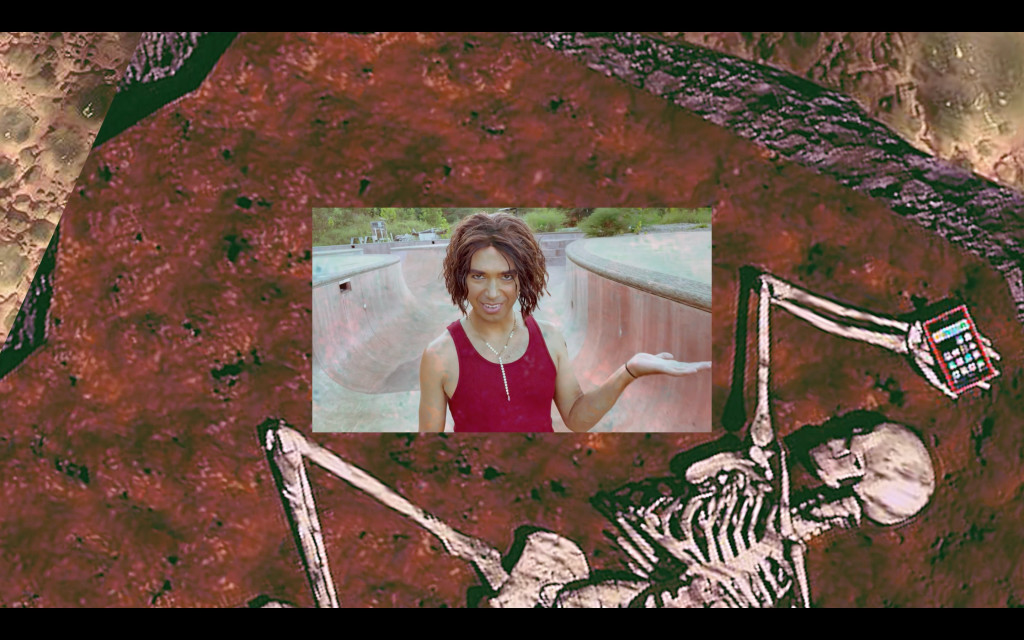
So perhaps DIS won’t have single-handedly ushered the specter of death into crypto. Still, their NFTs are unique for treating death not as a side-effect of something else but as a starting place for life itself. Not long before Death Clock, DIS produced the short film Everything But The World (2022), a post-apocalyptic nature documentary set in the future. The narrator is Leilah Weinraub, and much of what she says about mankind before its extinction applies to Death Clock, too, a project that is so obviously unscientific as to be more powerful as a guide, because it’s a reminder that the time of one’s death is as unpredictable as its eventuality is certain. “History is not linear, and progress is not an arrow piercing into the dark ahead,” Weinraub says, about life as much as the markets. “Time does not run straight forward and forward and forward.”
Duncan Cooper writes about art and saints.
